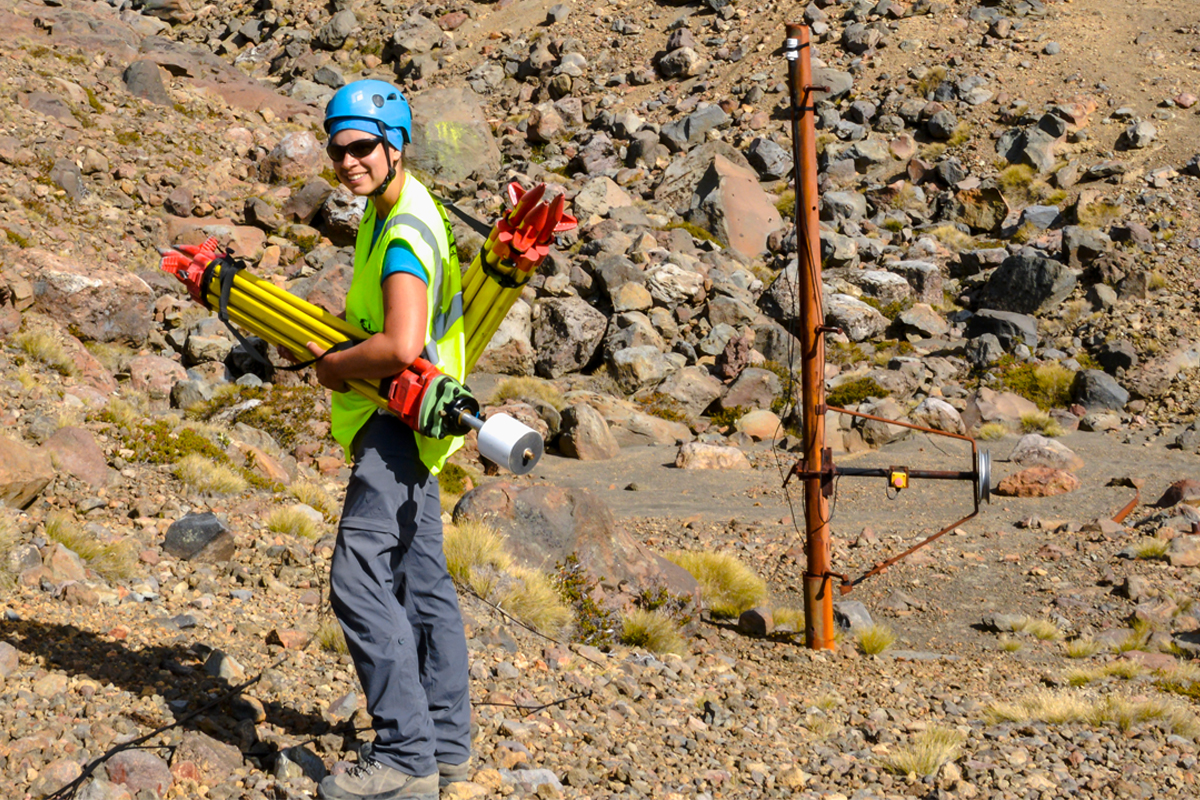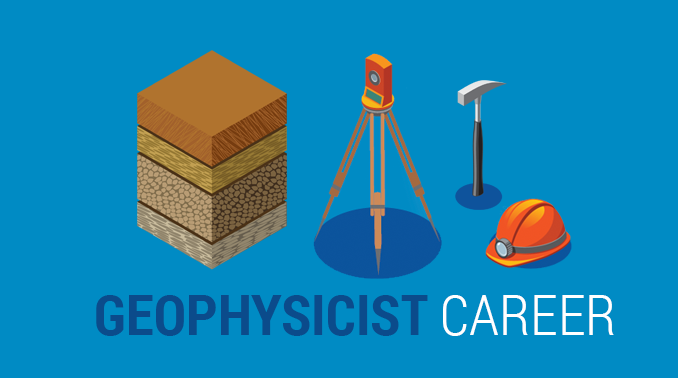All Categories
Featured
Table of Contents
- – Geophysical Prospecting in Bassendean Oz 2023
- – How To Become A Geophysicist in Como Oz 2021
- – Become An Earthquake Scientist in East Frema...
- – Careers in Ridgewood Western Australia 2021
- – Mining Geophysicist Profile in Peppermint G...
- – Average Geophysicist Salary in Salter Poin...
- – Geophysical Services in Hamersley Western ...
- – Career Guide: Geophysicist in Mundijong Oz...
- – Geophysicist Salary And Job Description 20...
- – How To Become A Geologist Or Geophysicist ...
Geophysical Prospecting in Bassendean Oz 2023
What is the job description of a Geophysicist? What are the tasks and obligations of a Geophysicist? What does a Geophysicist do? A geophysicist research studies physical aspects of the earth and uses intricate equipment to collect information on earthquakes and seismic waves, which move through and around the earth. The very best industries for geophysicists are the mining and oil markets, as they play a substantial part in the acquisition of natural resources.
This Geophysicist job description example consists of the list of essential Geophysicist tasks and duties as revealed listed below. It can be modified to fit the specific Geophysicist profile you're attempting to fill as a recruiter or task candidate.
Career chances differ widely across a variety of fields including geophysical information, environment modelling, engineering geology, hydrology, mining, environmental consulting, natural deposits expedition, farming, and others. There are numerous profession courses that can combine your academic backgrounds, skills, and experience with your various interests. Go through the task titles below for concepts.
How To Become A Geophysicist in Como Oz 2021
Go to the National Occupational Classification site to research study basic requirements and responsibilities of tasks in your field.
Geophysics plays in essential role in many aspects of civil engineering, petroleum engineering, mechanical engineering, and mining engineering, along with mathematics, physics, geology, chemistry, hydrology, and computer system science. Therefore, trainees in other majors might think about a small in geophysical engineering. The core courses required for a minor are: GPGN229, Mathematical Geophysics (3.
0 credits) GPGN329, Physics of the Earth II (3. 0 credits) Students might please the remaining 5 hours with a mix of other geophysics courses, as well as courses in geology, mathematics, or computer science, depending on the student's major.
Become An Earthquake Scientist in East Fremantle Australia 2022

The income level of geophysicists can vary depending on elements such as their level of education, their level of experience, where they work, and many others. According to the 2018 Alberta Wage and Wage Study, Albertans working in the occupational group earn an average salary of each year. According to Work, BC (the Province of British Columbia), the yearly provincial median income of B.C.

Geophysicists can work both indoors, in an office or lab environment, or outdoors while carrying out fieldwork. Fieldwork can include being exposed to a range of climate condition, and potentially hazardous circumstances, depending upon their area of expertise of the geophysicist. Some geophysicists might likewise spend long durations of time working in small groups in remote places.
When conducting fieldwork, the working hours of geophysicists can be long and consist of nights, weekends and vacations. To become a qualified geophysicist, you need to posses a particular set of skills and characteristic. These skills and traits will permit you to efficiently carry out the tasks of your task, along with maintain a favorable attitude towards your work.
Careers in Ridgewood Western Australia 2021
Colleges and universities Federal, provincial/state government departments Oil, gas and mining companies Non-profit organizations Geological and geophysical consulting companies Public and private research study companies Our task board below has "Geophysicist" posts in Canada, the United States, the UK and Australia, when available:.
Our information suggests that the highest spend for a Geophysicist is $165k/ year Our data suggests that the most affordable spend for a Geophysicist is $55k/ year Increasing your pay as a Geophysicist is possible in various ways. Modification of company: Think about a profession transfer to a new company that is ready to pay higher for your skills.
Handling Experience: If you are a Geophysicist that manages more junior Geophysicists, this experience can increase the possibility to earn more.
Mining Geophysicist Profile in Peppermint Grove Australia 2022
Physics of the Earth and its area Age of the sea floor. Much of the dating info comes from magnetic abnormalities.
, which consists of other planetary bodies.
The gravitational pull of the Moon and Sun generates 2 high tides and 2 low tides every lunar day, or every 24 hr and 50 minutes. There is a space of 12 hours and 25 minutes in between every high tide and between every low tide. Gravitational forces make rocks push down on much deeper rocks, increasing their density as the depth boosts.
Average Geophysicist Salary in Salter Point Aus 2020
The surface area gravitational field provides information on the characteristics of tectonic plates. The geopotential surface called the geoid is one definition of the shape of the Earth. The geoid would be the international mean sea level if the oceans were in stability and might be extended through the continents (such as with really narrow canals).
The primary sources of heat are the prehistoric heat and radioactivity, although there are likewise contributions from phase transitions. Heat is mainly brought to the surface area by thermal convection, although there are two thermal border layers the coremantle border and the lithosphere in which heat is transported by conduction. Some heat is carried up from the bottom of the mantle by mantle plumes. If the waves come from a localized source such as an earthquake or explosion, measurements at more than one location can be utilized to find the source. The locations of earthquakes offer information on plate tectonics and mantle convection. Recording of seismic waves from regulated sources offers info on the area that the waves take a trip through.
Reflections taped utilizing Reflection Seismology can supply a wealth of info on the structure of the earth as much as a number of kilometers deep and are used to increase our understanding of the geology along with to explore for oil and gas. Changes in the travel instructions, called refraction, can be used to presume the deep structure of the Earth. A range of electric techniques are utilized in geophysical study., a potential that develops in the ground since of manufactured or natural disturbances.
Geophysical Services in Hamersley Western Australia 2020
In the highly conductive liquid iron of the outer core, magnetic fields are generated by electrical currents through electro-magnetic induction.
These geomagnetic reversals, examined within a Geomagnetic Polarity Time Scale, consist of 184 polarity periods in the last 83 million years, with change in frequency over time, with the most recent quick complete turnaround of the Laschamp occasion taking place 41,000 years ago throughout the last glacial period. Geologists observed geomagnetic reversal recorded in volcanic rocks, through magnetostratigraphy connection (see natural remanent magnetization) and their signature can be viewed as parallel direct magnetic anomaly stripes on the seafloor. They are the basis of magnetostratigraphy, which associates magnetic turnarounds with other stratigraphies to construct geologic time scales. In addition, the magnetization in rocks can be used to determine the movement of continents. Radioactive decay represent about 80% of the Earth's internal heat, powering the geodynamo and plate tectonics.
Career Guide: Geophysicist in Mundijong Oz 2021
, ocean, mantle and core., flows like a fluid over long time intervals. The mantle circulation drives plate tectonics and the flow in the Earth's core drives the geodynamo.
The viscosity of rocks is affected by temperature level and pressure, and in turn, determines the rates at which tectonic plates move. Water is a very complicated substance and its special homes are essential for life. Its physical homes shape the hydrosphere and are a vital part of the water cycle and environment.
Geophysicist Salary And Job Description 2023 in Joondalup Oz 2023
The lots of types of rainfall include an intricate mixture of processes such as coalescence, supercooling and supersaturation. Some precipitated water becomes groundwater, and groundwater flow includes phenomena such as percolation, while the conductivity of water makes electrical and electro-magnetic methods useful for tracking groundwater flow. Physical homes of water such as salinity have a big impact on its motion in the oceans. The Earth is roughly round, however it bulges towards the Equator, so it is approximately in the shape of an ellipsoid (see Earth ellipsoid). This bulge is because of its rotation and is almost constant with an Earth in hydrostatic balance. The comprehensive shape of the Earth, nevertheless, is likewise impacted by the distribution of continents and ocean basins, and to some extent by the characteristics of the plates.
(5. 515) is far greater than the common particular gravity of rocks at the surface area (2.
33 M R2, compared to 0. 4 M R2 for a sphere of constant density). Some of the density boost is compression under the enormous pressures inside the Earth.
How To Become A Geologist Or Geophysicist in East Perth Australia 2020
The conclusion is that pressure alone can not account for the boost in density. Instead, we understand that the Earth's core is composed of an alloy of iron and other minerals.
The outer core is liquid, and the movement of this extremely conductive fluid creates the Earth's field. Earth's inner core, nevertheless, is strong since of the enormous pressure. Reconstruction of seismic reflections in the deep interior indicates some significant discontinuities in seismic speeds that demarcate the significant zones of the Earth: inner core, external core, mantle, lithosphere and crust.
Table of Contents
- – Geophysical Prospecting in Bassendean Oz 2023
- – How To Become A Geophysicist in Como Oz 2021
- – Become An Earthquake Scientist in East Frema...
- – Careers in Ridgewood Western Australia 2021
- – Mining Geophysicist Profile in Peppermint G...
- – Average Geophysicist Salary in Salter Poin...
- – Geophysical Services in Hamersley Western ...
- – Career Guide: Geophysicist in Mundijong Oz...
- – Geophysicist Salary And Job Description 20...
- – How To Become A Geologist Or Geophysicist ...
Latest Posts
Geophysicist Jobs in North Perth Australia 2021
Geophysical Survey Definition in Warnbro Western Australia 2021
What Is Geophysics? in Carlisle Australia 2020
More
Latest Posts
Geophysicist Jobs in North Perth Australia 2021
Geophysical Survey Definition in Warnbro Western Australia 2021
What Is Geophysics? in Carlisle Australia 2020